There's a lot of interest in Gluten Free, NON-GMO ancient grains these days. In our breads we feature grains such as teff, quinoa, sorghum, amaranth, flax, and oats, and with good reason. Ancient grains bring the romance of rustic old worlds into our kitchens, and these options avoid complex gluten protein compounds that are harder to digest. They add new interesting flavors to our meals and put us in touch with a slower, more natural way of life, while providing efficient, available energy! We will share why they are chosen for our bread flour blends and are enjoying such a revival today.
For many years archaeologists have reported finding the remains of grains and grain stores in ancient sites. For example, researchers in China found the remains of charred wheat and millet in Yunnan that are thought to be nearly 4,000 years old!
These heritage grains have been grown by different communities throughout the world as they began settling in one place and forsaking the nomadic life. Oats, which were once the major grain of Europe, were sidelined after the 1800s when faster-growing, higher-yielding wheats took over. We feature oats in many unique ways, including in our famed Oaty Scones, Raspberry-Oat Muffins, and various cookies and crumble toppings!
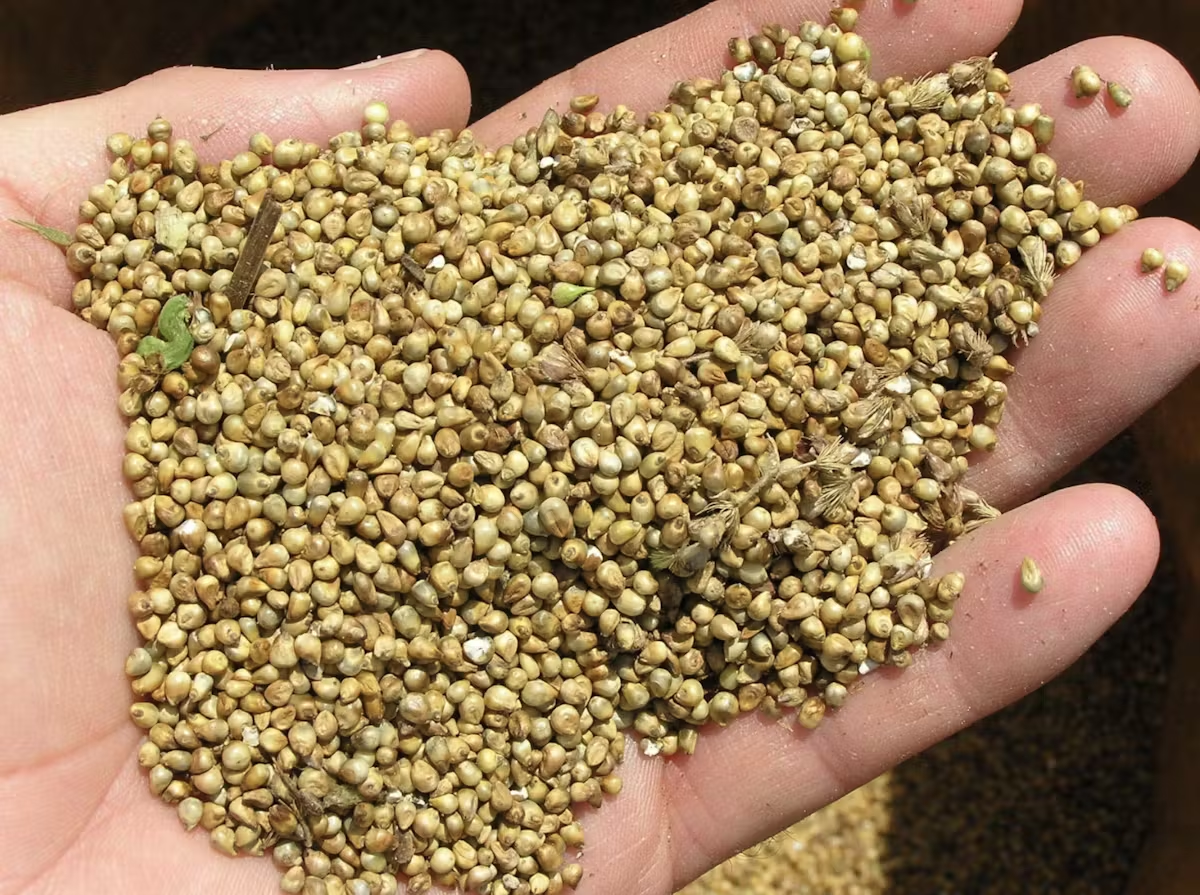
Most ancient grains have a delicious chewy texture, are grown in an eco-friendly way, and many provide useful grain alternatives for those searching for gluten-free and/or wheat-free items. What's more, they are usually cooked in the "whole grain" form which is nutritionally much more beneficial than the over processed and refined modern grain products. Most of our grains are grown organically which is better for the soil and environment, and are minimally processed locally in Eastern Washington, so they are always fresh and nutritive. Often described as "super grains", ancient grains offer us much in the way of natural nutrition and positive health benefits.
Compared to modern grains, ancient grains like quinoa, millet and sorghum have more protein, which is handy for the rising number of vegetarians and vegans with their need for quality plant protein sources. These heritage grains boast more fiber and can be a richer source of vitamins and minerals when grown in the proper soil climate, which we source responsibly for you from our organic and conscious farming partnerships.
Some of the grains we use are specifically nutrient-dense. For example, teff hit the high values for manganese, flax scores over twice as much fiber as other grains, and oats contain an impressive level of thiamin.
Ancient grains tend to be less refined than modern ones. When eaten as whole seeds, such is the flax in our Sunset Bread, you get the whole grain advantage. Whole grains come with their natural bran and germ intact, including those necessary fibers and nutrients that are lost in the process of milling modern grains.
For the egg substitute in all our Vegan-friendly bread products (dairy and egg free), we fresh grind organic golden flax that provides highly available fiber and nutrients, which is a good thing in our world of over-refined fare!
Research shows that people who eat whole grains generally have lower cholesterol levels and are less likely to develop diabetes and certain cancers, most notably breast and colon cancers. Several studies have also linked eating whole grains to a low risk of high blood pressure. Our breads burn slow, providing low glycemic, nutrient dense options for you and your family.
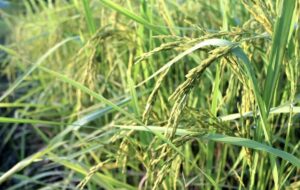
Teff is a fine grain—about the size of a poppy seed that comes in a variety of colors, from white and red to dark brown. Teff grows predominantly in Ethiopia and Eritrea, and thrives even in difficult climates.
The grain has a very mild, nutty flavor, and it packs a serious nutritional punch. Teff has an excellent balance of amino acids, and it is also high in protein, calcium, and iron.
Teff leads all the grains by a wide margin in its calcium content;
With a cup of cooked teff offering 123mg, you have about the same amount of calcium as in a half-cup of cooked spinach. It’s also an excellent source of vitamin C, a nutrient not commonly found in grains and also a good source of iron. Teff is high in resistant starch, a newly-discovered type of dietary fiber that can benefit blood sugar management, weight control, and colon health. It’s estimated that 20-40% of the carbohydrates in teff are resistant starches. A gluten-free grain with a mild flavor, teff is a healthy and versatile ingredient for many gluten-free products.
The grain can be used by celiacs (the gluten in teff does not contain the a-gliadin-fraction that causes a reaction in those with celiac disease) and has a high concentration of different nutrients, a very high calcium content, and significant levels of the minerals phosphorus, magnesium, aluminum, iron, copper, zinc, boron and barium, and also of thiamin.
Teff is high in protein. It is considered to have an excellent amino acid composition, including all 8 essential amino acids for humans, and is higher in lysine than wheat or barley.[10] Teff is high in carbohydrates and fiber.
Ground into our flour blends, teff is used to make the traditional bread, injera: a flat, pancake-like, fermented bread that complements the exotic spices found in the regional food. It makes an excellent gluten-free flour alternative, and is used in our pie crusts, cookies, breads, and an assortment of other baked goods. Teff can also be eaten whole and steamed, boiled, or baked as a side dish or a main course.
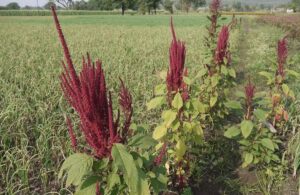
This grain has been cultivated as a grain for 8,000 years. The yield of grain amaranth is comparable to rice or maize. It was a staple food of the Aztecs, and was used as an integral part of Aztec religious ceremonies. The cultivation of amaranth was banned by the conquistadores upon their conquest of the Aztec nation. Because the plant has continued to grow as a weed since that time, its genetic base has been largely maintained. Research on grain amaranth began in the US in the 1970s. By the end of the 1970s, a few thousand acres were being cultivated. Much of the grain currently grown is sold in health food shops.
SO WHAT IS AMARANTH?
The name for amaranth comes from the Greek amarantos, “one that does not wither," or “the never-fading.” It isn’t a true cereal grain in the sense that oats, wheat, sorghum, and most other grains are. “True cereals” all stem from the Poaceae family of plants, while amaranth (among others) is often referred to as a pseudo-cereal, meaning it belongs to a different plant species. So why are these interlopers almost always included in the whole grain roundup? Because their overall nutrient profile is similar to that of cereals, and more importantly, pseudocereals like amaranth have been utilized in traditional diets spanning thousands of years in much the same way as the “true cereals” have been.
In true “never-fading” fashion, seeds from the amaranth plant spread around the world and both leaves and grain became important food sources in areas of Africa, India, and Nepal. Once established, amaranth can continue to thrive in low-water conditions, making it especially valuable in sub-Sahara Africa where water sources are few, especially in the dry season. Looking a little closer to home, amaranth received renewed interested as a food source here in the United States back in the 1970s, and we resource our amaranth flours here in the US. Click here for some interesting grower’s links and resources.
AMARANTH’S HEALTH BENEFITS:
Amaranth contains more than three times the average amount of calcium and is also high in iron, magnesium, phosphorus, and potassium. It’s also aside Teff the only grains documented to contain Vitamin C. Very little research has been conducted on amaranth’s beneficial properties, but the studies that have focused on amaranth’s role in a healthy diet have revealed three very important reasons to add it to your diet.
It’s a protein powerhouse. At about 13-14%, it easily trumps the protein content of most other grains. You may hear the protein in amaranth referred to as “complete” because it contains lysine, an amino acid missing or negligible in many grains. One of the first studies to showcase amaranth’s protein power took place in Peru in the late 1980s. Children were fed toasted amaranth flour, popped amaranth grain, and amaranth flakes as the source of all dietary protein and fat, and as 50% of their daily energy requirements, then later fed a mix of amaranth and corn in various forms. Because researchers focused on “end results” so to speak, we’ll gloss over the details and sum up their findings with this key quote: “If amaranths were available at a reasonable cost, they could represent a major component of the diets of children in the developing world…”
Another study from the Institute of Nutrition of Central America and Panama at Guatemala in 1993 saw similar results when amaranth was submitted to extrusion and popping processes. Using cheese protein as a reference, researchers concluded that the protein in amaranth “is among the highest in nutritive quality of vegetable origin and close to those of animal origin products.” More recently, molecular biologists in Mexico set out to study the bioactive peptides in amaranth’s protein and, in 2008, were the first to report the presence of a lunasin-like peptide. Drawing a blank on lunasin? It’s a peptide that was previously identified in soybeans and is widely thought to have cancer-preventing benefits as well as possibly blocking inflammation that accompanies several chronic health conditions such as diabetes, heart disease, and stroke.
It’s good for your heart.
Amaranth has shown potential as a cholesterol-lowing whole grain in several studies conducted over the past 14 years. First, in 1996, researchers from the U. S. Department of Agriculture in Madison, WI conducted studies that showed the healthy oil in amaranth could significantly reduce total cholesterol and LDL (“bad”) cholesterol in 6-week-old female chickens. This was great news for chickens, but what about us humans? Cut to 2003, when researchers at the University of Guelph in Ontario, Canada found that amaranth can be a rich dietary source of phytosterols, which have cholesterol-lowering properties. Just a few years later, in 2007, Russian researchers drew from the 1996 study to determine whether or not amaranth would also show benefits for patients with cardiovascular disease (CVD). Patients who presented with coronary heart disease and hypertension not only showed benefits from the inclusion of amaranth in their diets, researchers also saw a significant decrease in the amounts of total cholesterol, triglycerides, LDL cholesterol.
Last but not least, it’s naturally gluten-free. Gluten is the major protein in many grains and is responsible for the elasticity in dough, allows for leavening, and contributes chewiness to baked products. But more and more people are finding they cannot comfortably – or even safely – eat products containing gluten, often due to Celiac disease, an autoimmune digestive disease that damages the body’s ability to absorb nutrients from food. This makes amaranth an important grain to take note of during May, which isCeliac Awareness Month. In fact, more whole grains are gluten-free than gluten-containing! It’s just that the gluten-containing whole grains and products have been more prevalent in our food supply, but this is slowly changing. If you or someone you know has been diagnosed with Celiac disease, we hope you’ll take a moment to visit our Gluten-Free Whole Grains page – and maybe try some of the amaranth recipes we’re highlighting below!
Nutritional analysis:
Raw amaranth grain is inedible to humans and cannot be digested, thus it has to be prepared and cooked like other grains and becomes fully bio-available in our baked goods. Amaranth is a promising source of nutrition, higher in some nutrients over wheat breads.
The protein contained in amaranth is of an unusually high quality, according to Educational Concerns For Hunger Organization (ECHO).[1] Amaranth grain is particularly high in lysine, an amino acid found in low quantities in other grains. Amaranth grain is free of gluten, which is important for people with gluten intolerance.
It has impressive nutrients, especially: Protein, Calcium, Iron and Zinc, with a slight nutty taste it is great in our muffins, cookies and bread.
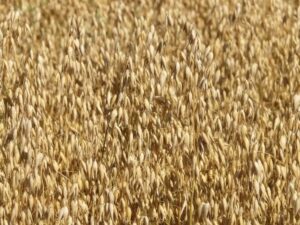
Are oats naturally gluten-free?
Yes. We have addressed the issue comprehensively of whether or not oats are safe for people on a gluten-free diet, but the confusion still exists. The explanation is really very simple; oats are naturally gluten-free but are a rotation crop with wheat, barley and rye.
As any farmer knows volunteer plants will grow here and there within the alternative crop if they have been planted in the field the previous year, which is exactly what happens. So the oats become contaminated with wheat, barley or rye in the field and with the harvesting and processing equipment that is also used to harvest and process those grains. In this scenario there is no way to prevent cross-contamination therefore regular oats are not safe to eat on a gluten-free diet.
However Gluten Free Certified Oats for the gluten-intolerant are used in our flour blends and it is the only way to safely consume oats or oat products. Certified gluten-free oats are grown in a similar fashion as organic crops. To begin, a field must lay fallow for 4 years, eliminating the possibility of volunteer plants. All harvesting and processing equipment must be solely used for the production of oats. The final step is the certification process. Farmers that grow and process oats in this way can then apply for gluten-free certification through one of the national gluten intolerance organizations, who then inspect and test the oats and the processing facility to ensure the above steps are followed and that the oats do in fact meet the U.S. accepted standard of gluten-free, currently less than 20ppm. The inspection is similar to kosher inspections and in fact is conducted by rabbis.
Oats come in many forms: hulled whole, steel cut, thick and regular rolled type and quick oats. Oats are a good source of soluble fiber, which helps lower blood cholesterol.
Unique Oat Antioxidants Reduce Risk of Cardiovascular Disease:
Oats, via their high fiber content, are already known to help remove cholesterol from the digestive system that would otherwise end up in the bloodstream. Now, the latest research suggests they may have another cardio-protective mechanism.
Antioxidant compounds unique to oats, called avenanthramides, help prevent free radicals from damaging LDL cholesterol, thus reducing the risk of cardiovascular disease, suggests a study conducted at Tufts University and published in The Journal of Nutrition.
In another study also conducted at Tufts and published in Atherosclerosis, researchers exposed human arterial wall cells to purified avenenthramides from oats for 24 hours, and found that these oat phenols significantly suppressed the production of several types of molecules involved in the attachment of monocytes (immune cells in the bloodstream) to the arterial wall—the first step in the development of atherosclerosis.
Oat avenanthamides suppressed production of ICAM-1 (intracellular adhesion molecule-1) and VCAM-1 (vascular adhesion molecule-1), E-selectin, and the secretion of pro-inflammatory cytokines KL-6, chemokines IL-8 and protein MCP-1 (monocyte chemoattractant protein). For best oat benefit absorption, vitamin C can help assimilation so cut an orange (which is rich in vitamin C) in quarters top eat with your Sunshine Bread sandwich, or top your Oaty Scones with Orange Marmalade! However in our flour blending with Teff high in C, your absorbtion is already improved.
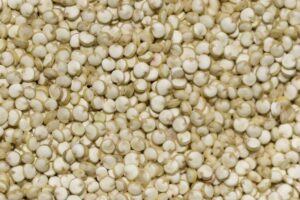
A grain crop that is grown for its edible seeds, it is pronounced KEEN-wah. Quinoa is non-GMO, Gluten free and usually grown organically as it is in our flour blends. Even though not technically a grain, it still counts as a “whole grain” food.
There are three main types of quinoa… white, red and black.
There are thousands of trace nutrients in there, and some of them are extremely healthy. This includes interesting molecules called flavonoids, which are plant antioxidants that have been shown to have all sorts of beneficial effects on health. These important molecules have been shown to have anti-inflammatory, anti-viral, anti-cancer and anti-depressant effects… at least in animal studies.
Another important benefit of quinoa is that it is high in fiber:
One study that looked at 4 varieties of quinoa found a range of between 10 and 16 grams of fiber, per every 100 grams of uncooked quinoa. This equals 17-27 grams per cup, which is very high… more than twice as high as most grains. Boiled quinoa contains much less fiber, gram for gram, because it absorbs so much water.
Quinoa is an exception to this, being particularly high in all the essential amino acids. For this reason, quinoa is an excellent source of protein. It has both more and better protein than most grains.
The glycemic index is a measure of how quickly foods raise blood sugar levels. Such foods have also been linked to many of the chronic, Western diseases that are so common today… like diabetes and heart disease. Quinoa has a glycemic index of 53, which is considered low.
This is particularly true of some minerals… especially Magnesium, Potassium, Zinc and (for women) Iron. Interestingly, quinoa is very high in all 4 minerals. It is particularly high in magnesium, with one cup having about 30% of the RDA.
Quinoa also happens to be very high in antioxidants. Antioxidants are substances that neutralize free radicals and are believed to help fight ageing and many diseases. One study looked at antioxidants in 10 foods… 5 cereals, 3 pseudo-cereals and 2 legumes. Quinoa had the highest antioxidant content of all 10.
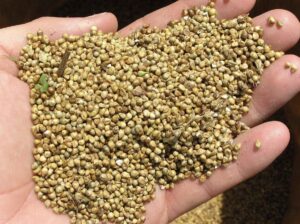
Millet is technically a seed and not a grain. The term millet can refer to a variety of grains however our inclusive organic millet flour in our blends is seed derived.
It is tiny and round in shape and can vary in color from white to gray to yellow to red and has a fabulously delicate flavor. The most widely available form of millet found in stores is the hulled type, although oftentimes you may be able to find traditional couscous, which is made from cracked millet.
A good source of some very important nutrients, including copper, manganese, phosphorus, and magnesium. Millet should also be included on your list of heart-healthy choices because of its status as a good source of magnesium. Magnesium has been shown in studies to reduce the severity of asthma and to reduce the frequency of migraine attacks. Magnesium has also been shown to lower high blood pressure and reduce the risk of heart attack, especially in people with atherosclerosis or diabetic heart disease.
Development and Repair of Body Tissue?
The phosphorus provided by millet plays a role in the structure of every cell in the body. Phosphorus is an important component of nucleic acids, the building blocks of the genetic code. Millet and other whole grains act as co-factors for more than 300 enzymes, including enzymes involved in the body's use of glucose and insulin secretion.
The whole kernel of truth: as part of your healthy way of eating, whole grains, such as millet, can significantly lower your risk of cardiovascular disease, obesity and type 2 diabetes and ground millet is added to all our bread recipes.

Our Non GMO preference as a tasty oil ingredient, the safflower is a tall plant with spiked leaves and yellow or orange flowers. The flowers were used as a dye for clothing in ancient Egypt, and garlands of it were found in King Tut’s tomb, making it too an Ancient Grain! We have chosen it also with its chemical free, expeller pressed extraction that fits our requirements fopr inclusions within our exclusive recipes.
Safflower oil comes from the plant’s seeds. Two varieties are available: high-oleic and high-linoleic. High-oleic safflower oil contains monounsaturated fats, while high-linoleic safflower oil contains polyunsaturated fats. Polyunsaturated safflower oil is good for unheated foods and monounsaturated safflower oil is good for high-heat cooking in our doughnuts, making it a good substitute for olive oil when cooking.
Is It Good for You?
Safflower oil has three qualities that make it a good ingredient for healthy eating: it’s an unsaturated fat, it has little taste, and it can be heated to higher temperatures than many other less healthy cooking oils.
While research is still in its early stages, safflower oil shows a lot of potential when it comes to health benefits. Its healthy fatty acid content may be able to help with cholesterol.
Health Benefits of Safflower Oil:
Although there is no consensus among doctors and tests are on-going, safflower oil has been shown to alleviate the symptoms of coronary heart disease, Type 2 Diabetes, high blood pressure and arteriosclerosis. Although none of these claims have been proven, many people have shown that there are significant benefits to using safflower oil for health benefits.
Safflower oil also contains a high amount of Vitamin E which reduces respiratory problems, helps blood circulation, and strengthens the immune system. The high concentration of Vitamin E also helps the body eliminate free radicals in the body, lowering the risk of heart disease and cancer. It is great for cooking as the nutritional value is not lost even when heated to a high temperature-such as deep frying.
Safflower oil is high in unsaturated fats and low in saturated fats making it a great choice to keep your heart healthy. It also contains Omega-6 fatty acids which help the body burn fat. These fatty acids also build prostaglandins which help control muscle contractions, balance blood pressure, and help the immune system. Other oils that contain omega-6 fatty acids: macadamia oil, flaxseed oil and emu oil.
Safflower oil, when rubbed into the roots of your hair, has been shown to improve the hair quality and also giving the hair a lustrous sheen. It’s also been shown that it can moisturize skin giving it a healthy glow.
The oil is also added to a number of bath and body products as it helps smooth and moisturize skin. When applied directly to the skin, it can also reduce the visibility of lines and wrinkles, reduce eczema, and reduce inflammation and redness.
Nutritional Information of Safflower Oil:
There are also a number of other benefits of using safflower oil including dietary needs and overall well-being. One cup of safflower oil has 74.3 milligrams of Vitamin E which is essential to your diet. While you wouldn’t take it in that quantity, it shows that safflower oil can be used as part of a balanced diet and to promote well-being.
Safflower oils are shown to contain less saturated fat when compared to other cooking oils. Safflower Oil also does not contain any cholesterol which makes it part of a healthy diet.
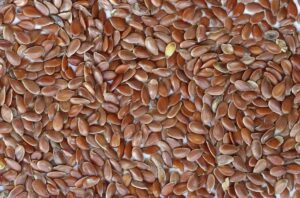
Our breads substituting ground Golden Organic Flax for eggs, make our Vegan breads and baked goods unusually HIGH in flax fiber bringing expanded benefits to you!
Flaxseeds (also called linseeds) are a rich source of micronutrients, dietary fiber, manganese, vitamin B1, and the essential fatty acid alpha-linolenic acid, also known as ALA or omega-3. The seeds come from flax, one of the oldest fiber crops in the world - known to have been cultivated in ancient Egypt and China.
Most nutrition experts recommend ground over whole flaxseed because the ground form is easier for your body to digest. Whole flaxseed may pass through your intestine undigested, which means you won't get all the benefits.
Flaxseed's health benefits come from the fact that it's high in fiber and omega-3 fatty acids, as well as phytochemicals called lignans. One tablespoon of ground flaxseed contains 2 grams of polyunsaturated fatty acids (includes the omega 3s) and 2 grams of dietary fiber and 37 calories.
Flaxseed is commonly used to improve digestive health or relieve constipation. Flaxseed may also help lower total blood cholesterol and low-density lipoprotein (LDL, or "bad") cholesterol levels, which may help reduce the risk of heart disease.
Is flaxseed the new wonder food? Preliminary studies show that it may help fight heart disease, diabetes and breast cancer:
Some call it one of the most powerful plant foods on the planet. There’s some evidence it may help reduce your risk of heart disease, cancer, stroke, and diabetes. That’s quite a tall order for a tiny seed that’s been around for centuries.
Flaxseed was cultivated in Babylon as early as 3000 BC. In the 8th century, King Charlemagne believed so strongly in the health benefits of flaxseed that he passed laws requiring his subjects to consume it. Now, thirteen centuries later, some experts say we have preliminary research to back up what Charlemagne suspected.
Flaxseed is found in all kinds of today's foods from crackers to frozen waffles to oatmeal. The Flax Council estimates close to 300 new flax-based products were launched in the U.S. and Canada in 2010 alone. Not only has consumer demand for flaxseed grown, agricultural use has also increased. Flaxseed is what's used to feed all those chickens that are laying eggs with higher levels of omega-3 fatty acids.
Although flaxseed contains all sorts of healthy components, it owes its primary healthy reputation to three of them:
Flax is the #1 whole-food source of lignans, a phytonutrient associated with prolonged survival in cancer patients(especially breast cancer), having 800x more than any other food. Flax may be beneficial in suppressing the growth of breast and prostate cancers because when consumed, tumor cell proliferation goes down, cancer cell death increases, and c-erbB2 score is reduced. Combining flaxseed with dietary fat restriction may have an even greater effect on prostate cancer.
Taking only one tablespoon of ground flaxseed a day (there is one tablespoon ground flax for each egg replaced in our recipes) may help prevent and reverse diabetes.
Eating flaxseeds may also diminish skin sensitivity and improve skin barrier function and condition. Because lignans are activated by out gut bacteria, taking antibiotics may impair the production of the lignans so flax may help re-balance your digestive system.
Flax seeds are an excellent source of Omega-3 fatty acids, iron, zinc, copper, calcium, protein, potassium, magnesium, folate, soluble fiber and even boron.
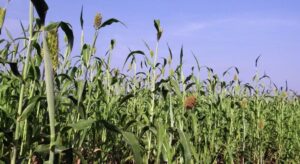
Sorghum is a cereal grain that grows tall like corn, and it is used for more than just sweetening. In the gluten-free market sorghum is popular as a syrup but it can also be used as a grain or ground into a flour -- it is in fact an ancient whole grain full of nutritional benefits and is used in all our flour blends, and can also be popped like popcorn or cooked into a risotto.
Some of the health benefits of sorghum include its ability to prevent certain types of cancer, help control diabetes, offer a dietary option for people with Celiac disease, improve digestive health, build strong bones, promote red blood cell development, and boost energy and fuel production.
Sorghum is the broad term for an entire genus of grasses that are native to tropics and subtropics around the world. While there are more than 30 different species of sorghum, only one is harvested for human consumption, while the others are primarily used as fodder for animals. The important species for humans, Sorghum bicolor, is native to Africa, but can now be found all around the world as a staple food product, our grain being sourced here in the US.
The versatility of sorghum, combined with the fact that it is acceptable for people with wheat allergies to eat, makes it extremely important as a staple crop in the world. Furthermore, the vast health benefits associated with sorghum make it a great alternative to other types of grains, grasses, and cereals that are commonly consumed across the globe. Let’s take a closer look at the nutrients that sorghum can provide us in our diet.
Nutritional Value of Sorghum:
Sorghum is a powerhouse in terms of nutrients, and can provide those wise individuals who add it to their diet with vitamins like niacin, riboflavin, and thiamin, as well as high levels of magnesium, iron, copper, calcium, phosphorous, and potassium, as well as nearly half the daily required intake of protein and a very significant amount of dietary fiber (48% of the recommended intake).
Health Benefits of Sorghum:
Digestive Health: It seems like many healthy foods contain some amount of dietary fiber, which greatly improves the functionality of the digestive system. However, sorghum is one of the best foods out there for dietary fiber. A single serving of sorghum contains 48% of your daily recommended intake of dietary fiber, more than 12 grams!
That means that your digestive tract will keep your food moving along rapidly, preventing things like cramping, bloating, constipation, stomach aches, excess gas, and diarrhea. Furthermore, excess amounts of fiber in the body helps to scrape off dangerous cholesterol (LDL), which helps to improve heart health and protect your body from conditions like atherosclerosis, heart attacks, and strokes.
Cancer Prevention: The bran layer of the sorghum grains contain important antioxidants that are not found in many other types of food. These antioxidants have been directly connected to a reduced chance of developing various types of cancer, including esophageal cancer, particularly in comparison to people who regularly eat wheat and corn. Antioxidants are the beneficial compounds that neutralize and eliminate free radicals in the body, which often cause healthy cells in the body to mutate into cancer cells.
Diabetes Control: Excessive carbohydrates break down into simple sugars and wreak havoc on the glucose levels in the body, leading to diabetes, or causing chaos for those people who already suffer from this disease. However, the tannin-rich bran of sorghum actually has enzymes that inhibit the absorption of starch by the body, which can help to regulate insulin and glucose levels in the body. By keeping these levels balanced, diabetics won’t suffer as many plunges and spikes in their glucose levels, thereby preventing diabetic shock and other health complications.
Celiac Disease: Although it is a relatively “new” condition, it seems to be gaining awareness all around the world. Celiac disease is a severe allergy to gluten, which is primarily found in wheat-based products. Surprisingly, wheat/gluten is found in thousands of normal food items, making life for those suffering from Celiac disease very difficult. Fortunately, alternative grains and grasses, such as sorghum, can be eaten safely by those suffering from this increasingly common condition, without the painful inflammation, nausea, and gastrointestinal damage that gluten causes.
Bone Health: Magnesium is found in high quantities in sorghum, which means that your circulation of the blood, stimulating cellular growth and repair, and increasing the hair growth of the scalp, while also boosting energy levels throughout the body. A single serving of sorghum contains 58% of your daily recommended intake of copper.
Energy Levels: Niacin, also known as vitamin B6, is a key component in transforming food into usable energy and fuel for the body. Breaking down and metabolizing nutrients into energy will keep your energy levels stable throughout the day, rather than the cheap peaks and troughs that sugar boosts give you. Sorghum contains 28% of your recommended niacin intake per day!
There are no known concerns or cautions against adding sorghum to your diet. As it is a grass, there is the possibility of some people being allergic to it, but the cases of sorghum being allergenic are very rare. Furthermore, with the high content of certain minerals and vitamins, the only real danger is getting too much of a good thing, so eat sorghum in moderation and enjoy all of the wonderful health benefits! Calcium levels will be properly maintained, as magnesium increases calcium absorption in the body. These two minerals are also integral to the development of bone tissue and speeds up the healing of damaged or aging bones. This can prevent conditions like osteoporosis and arthritis, thereby keeping you active and healthy well into your old age.
Circulation and Red Blood Cell Development: Copper and Iron are also found in sorghum, and in a similar way as magnesium and calcium, copper helps to increase the uptake and absorption of iron into the body. This means a decreased likelihood of developing anemia, which is another name for iron deficiency. With enough iron and copper in your system, red blood cell development is increased.
We regret that we are no longer open for bread sales at this location as we have moved operations to our Seattle Fremont kitchen!!
But new partnership COMING HERE for eats and produce sales in Nov - stay tuned!
You can still find our bread all around the Puget Sound at our partner locations below, or ship it to your door!
• SnowGooseProduceMarket.com Daily 9am-6pm
• Pacioni's
• Temperate Habits on 1st Ave. in Mount Vernon have our bread/pizza in menu options
• Local home delivery from Bellingham to Seattle @ BoxOfGood.com!
• Arlington: menu & retail @ Athleisure
• Anacortes: menu & retail @ Cosmic Veggies
• Seattle: Lazy Cow menu & retail in Fremont next door to us
pickup there Sun-Fri with 72hr. advance orders!
• See regional outlets @ ShambalaBakery.com
Ballard and Edmonds Farmers Markets: Saturday and Sunday
Order online and ship to your door at ShambalaBakery.com
Call 206-442-1115, Mon-Fri 8am - 3pm to place an order,
or text Nancy @ 425-923-7688 for questions or order assistance